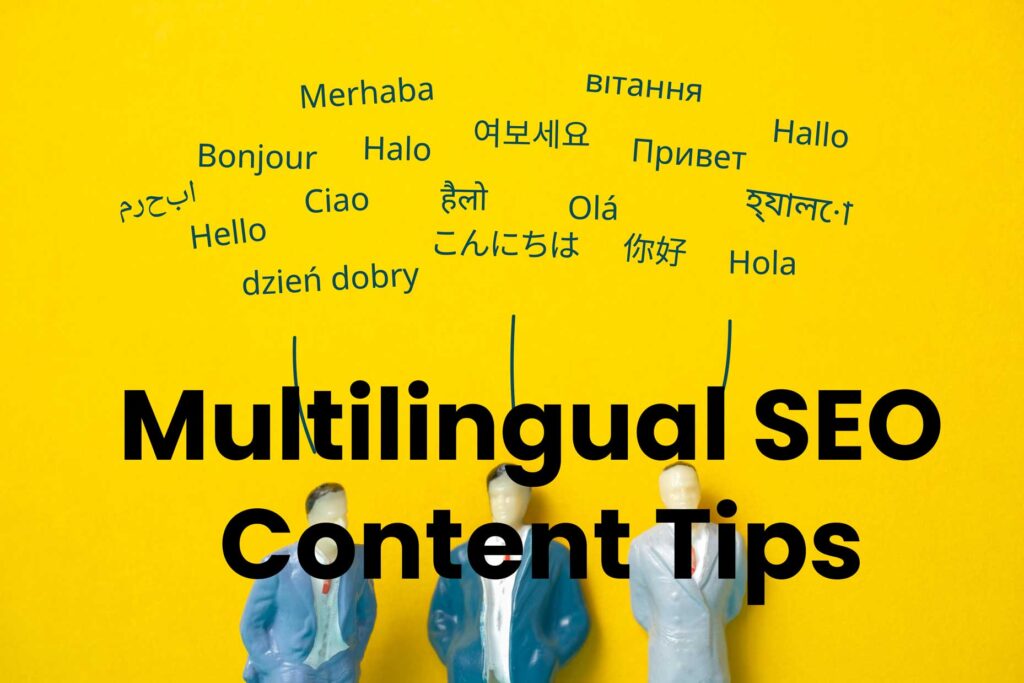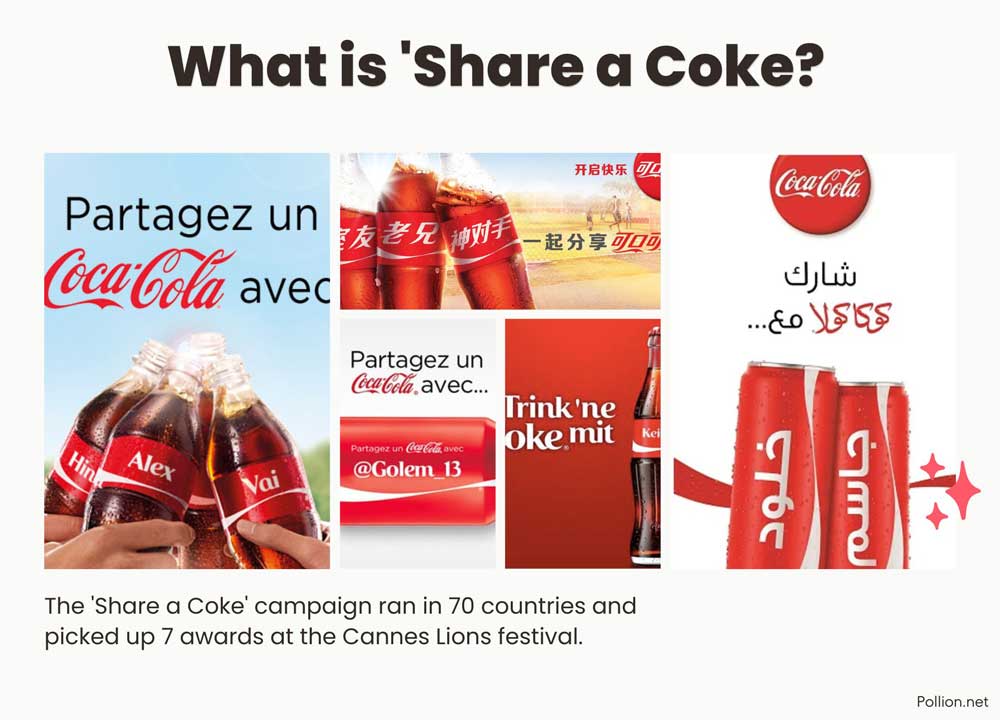Today’s global economy is causing businesses to widen their scope and explore international markets. As a result, you step outside the comfort of your local market to find profitable opportunities, but you also find challenges.
Remember how much it took you to convert and retain current customers? But you knew the audience, and you spoke the same language.
This time, the challenge is broad; the language barrier stands between you and the profit that global markets bear. Suddenly, traditional marketing methods aren’t as effective as they once were. And also you’re stuck selling to an audience that doesn’t speak your language.
That’s when multilingual content marketing kicks in. Let’s tackle what it means to have a multilingual content marketing strategy. How it helps expand your business influence and boost your global reach.
Table of Contents
What is Multilingual Content Marketing?
Multilingual content marketing is the process of marketing in multiple languages that confines your diverse audience’s local languages, cultures, and traditions.
It doesn’t mean simply translating your marketing content into multiple languages. Since the foundational goal of marketing is to attract and engage, a marketing copy in my native language that doesn’t reflect my culture and beliefs will not serve its purpose. You have to get the recipe right.
The multilingual content umbrella withholds translation, localization, and transcreation of your brand marketing assets, like website, social media, blog, etc.
Read more about localization: Why Choose a Translation Company Over a Freelance Translator?
What Is the Importance of Multilingual Content Marketing?

If you aspire to drive business growth in global markets, you can’t solely depend on your native language. And simply translating your content isn’t going to do it.
Solution? Depend on a multilingual content marketing strategy that speaks the local language of your audience and reflects their cultural aspects.
Multilingual content marketing helps you build trust and establish a connection with your potential customers regardless of their geographical location.
“Survey of 8,709 Consumers in 29 Countries Finds that 76% Prefer Purchasing Products with Information in their Own Language” – Source.
The importance of multilingual content marketing cannot be exaggerated. According to research, 72.1% of consumers spend almost all their time on websites in their native language.
What’s at stake
If you neglect to engage with your global audience in their native local languages, you risk losing out on potential and revenue. That’s where multilingual content marketing is needed. It helps also break down the language barrier and connect with your diverse audience on a deeper level, leading to increased customer acquisition and revenue.
In addition to the benefits of reaching a wider audience, multilingual content marketing will improve your search engine optimization (SEO) efforts. By creating content in multiple languages, you expand your keyword reach, improving your visibility in search engine results pages (SERPs).
5 Tips to Create SEO-Optimized Multilingual Content Strategy

- Keyword research
Your first step is acknowledging consumer and search behavior differences per target audience. Start by researching the most relevant and frequently searched keywords in each language.
💡 Use tools like Google Keyword Planner, SEMrush, or Ahrefs to identify the best keywords to target.
- Use hreflang tags
Use hreflang tags to indicate to search engines which language(s) your content is written in and help them display the correct version of your website or page to users in different regions. also, make sure to add hreflang tags to all pages of your multilingual site.
- Translate naturally
Avoid using machine translation tools as they may harm your brand reputation (ethical challenges mentioned below). Instead, rely on humans. Use professional translation services or hire native speakers to ensure the translated content feels natural.
- Localize your content
Some expressions or pictures that are acceptable in one culture may be offensive or inappropriate in another. Be aware of cultural differences that may impact how your content is perceived. And make sure to adapt your content accordingly.
- Build high-quality backlinks
Backlinks are a critical factor in search engine optimization. So it’s important to build high-quality backlinks to your multilingual content. Reach out to other websites in your niche and request links to your content, or use guest blogging to build backlinks and promote your content.
Let’s look at successful case studies for a deeper insight into what works and what doesn’t in multilingual campaigns.
5 Case Studies of Successful Multilingual Campaigns

What’s a better way than to learn from the best? Here are 5 case studies of successful multilingual content marketing campaigns by global brands.
This campaign showcased unique properties on Airbnb and was translated into multiple languages, including Spanish, French, German, Italian, and Portuguese.
💡 Key takeaway
It’s important to translate content into multiple languages to reach global audiences. However, successful multilingual content marketing also involves reflecting the preferences and values of local audiences.
This campaign encouraged consumers to find Coke bottles with their own names on them or to share a Coke with a friend. It was translated into more than 80 languages.
💡 Key takeaway
Personalization is a powerful tool in marketing. By offering customers the opportunity to see their own name or the name of a friend on a Coke bottle, Coca-Cola created a sense of connection and engagement that translated across languages and cultures.
This campaign targeted women and was translated into multiple languages, helping Nike increase sales among this demographic.
💡 Key takeaway
You can double the effect of your multilingual campaign by targeting specific demographics. By creating also content that expresses unique needs and aspirations. Nike was able to increase their footprint among women.
This campaign featured short videos of people from all over the world, sharing their experiences at Starbucks. It was translated into multiple languages, helping Starbucks connect with customers globally.
💡 Key takeaway
Telling compelling stories that resonate with people on a human level can transcend all language and cultural barriers.also by featuring stories and experiences from real people around the world, Starbucks created a sense of community and connection that did just that.
This campaign showcased how IKEA products can improve daily life and was translated into multiple languages, helping IKEA connect with customers on a global level.
💡 Key takeaway
Understand and reflect on the universal experiences and desires that connect your audience with your brand. By showcasing how its products can improve daily life, also IKEA created a sense of relevance and value that translated across languages and cultures.
How to Measure Effectiveness?

But how do you know if your multilingual content marketing efforts are paying off? It’s a question that many businesses struggle to answer. But not you.
In this section, you’ll find practical tips for measuring the success of your multilingual content marketing efforts, so you can make data-driven decisions and optimize your strategy for success.
- Define clear goals and metrics
Before you start any multilingual content marketing campaign, it’s important to define clear goals and metrics for success. These might include things like website traffic, lead generation, social media engagement, or sales. Set specific targets and track your progress along the road. This way, you can also determine whether your efforts are having the desired impact.
- Use web analytics tools
Web analytics tools like Google Analytics can provide valuable insights into how your multilingual content is performing. You can track also metrics like page views, bounce rates, time on site, and conversion rates to see which pages and content are resonating with your audience.
- Monitor social media engagement
Social media can be a powerful tool for multilingual content marketing, but it’s important to track engagement to see how well your content is performing. You can use tools like Hootsuite or Sprout Social to monitor likes, shares, comments, and mentions across multiple languages and platforms.
- Conduct surveys and focus groups
To get more detailed feedback from your target audience, consider conducting surveys or focus groups in multiple languages. This also can help you understand how well your content is resonating with different demographics and identify areas for improvement.
- Monitor customer behavior and feedback
Finally, don’t forget to listen to your customers. Monitor customer behavior and feedback across multiple languages to see how well your content is aligning with their needs and preferences.
You can use customer feedback forms, online reviews, and customer support interactions to gather this information and stay ahead of your game.
We mentioned a lot of software tools in our guide to providing and improving your multilingual content strategy. So how does technology play a part in supporting your growth goals?
The Role of Technology in Multilingual Content Marketing
Technology plays a supportive role in multilingual content marketing by providing tools and resources that help professional translation and localization service providers to deliver accurate, high-quality, and effective multilingual content to global audiences.
These tools can include:
- Translation and localization tools such as translation memory software, machine translation, and terminology management systems. Those can be used by professional translation and localization service providers to speed up the translation process, maintain consistency, and ensure accuracy.
- Content management systems (CMS) that are used to manage multilingual content, collaborate with clients, and streamline the translation and localization process.
- Analytics and tracking tools, such as website analytics and social media monitoring. Those are important to measure the effectiveness of multilingual content marketing campaigns and optimize content for better results.
- Machine learning and AI tools are increasingly used nowadays to improve the quality and efficiency of content creation in all languages.
Technology plays a significant role in supporting multilingual content marketing. However, it cannot replace professional translation and localization services done by humans, especially the ones provided by Pollion given the quick, high-quality service and constant support. If that’s what you’re looking for, then Pollion is the agency for you.
In fact, technology supports the work of translation and localization service providers by making the process more efficient and accurate.
Ethics and Cultural Considerations When Developing Multilingual Content
It’s essential to consider the ethical and cultural implications of your messaging when creating multilingual content. Especially when using technology to support your strategy.
Here are some key considerations for you:
- Respect the cultural differences of each language and culture. Consider their unique nuances, values, and norms. Understand these differences and tailor your messaging accordingly.
- Avoid offensive or insensitive language to specific cultures or communities. This also includes avoiding slurs, derogatory terms, and stereotypes that may be hurtful or inappropriate.
- Avoid relying solely on machine translation or non-native speakers, which may result in inaccurate translations or cultural misinterpretations.
- Adhere to local laws and regulations of each country. Make sure your messaging complies with local regulations to avoid legal issues and negative impact on your brand reputation.
In conclusion, developing ethical and culturally appropriate multilingual content requires sensitivity, knowledge, and attention to detail. By considering these factors, you ensure your multilingual content is effective, engaging, and respectful to your global audiences.
Now to you, let us know if this article was helpful, and whether there are specific topics about translation and multilingual content you’d like to know about!
